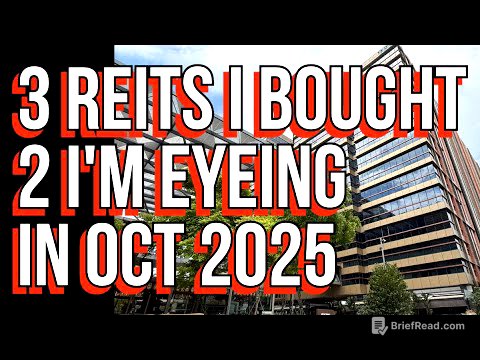TLDR;
This video provides a step-by-step guide on how to build your own AI agent without needing extensive coding knowledge or API subscriptions. It uses open-source tools like Browserbase and Gemini API to automate browser tasks based on prompts. The tutorial covers Python installation, setting up a virtual environment, and configuring the AI agent to perform tasks like searching Google and composing emails.
- Build AI agent without coding knowledge
- Uses open-source tools like Browserbase and Gemini API
- Automates browser tasks based on prompts
Introduction [0:00]
The video introduces the concept of building an AI agent that can perform tasks automatically based on user prompts, even without coding knowledge. The AI agent can automate tasks such as searching the internet, booking tickets, and ordering from Amazon. The creator encourages viewers to follow the tutorial and build their own AI agent, offering support in the comments for any doubts.
Installing Python and Browserbase [1:40]
The initial steps involve installing Python, the basic requirement for creating the AI agent. The presenter guides viewers to download the latest version of Python, emphasizing that the process is similar for both Macbook and Windows users. The video introduces Browserbase, an open-source repository that facilitates connecting AI agents with browsers. Two GitHub links, one for Browserbase and another for the web UI, are provided in the description for viewers to access.
Setting Up Playwright and Understanding LLMs [4:12]
The tutorial proceeds with installing Playwright, an open-source automation library developed by Microsoft, which automates tasks based on prompts. Playwright automates browser testing and web scraping. The video also touches on using Gemini, Google's LLM (Large Language Model), for processing and analyzing natural language, clarifying that the tutorial uses the Gemini API without needing a separate LLM.
Creating a Folder and Cloning the Web UI [9:25]
The next phase involves creating a new folder on the desktop named "AI Agent" and using terminal commands to navigate to that folder. The presenter explains how to clone the web UI from the provided GitHub repository into the AI Agent folder. This setup prepares the environment for the AI agent to operate.
Setting Up a Virtual Environment [10:53]
The video explains the importance of creating a virtual environment for the AI agent to run in. It guides viewers through installing UV, a Python package and project manager, and using it to create a virtual environment with Python. The presenter provides specific commands for both Mac/Linux and Windows users to install UV and create the virtual environment.
Activating the Virtual Environment and Installing Dependencies [12:28]
The tutorial details how to activate the virtual environment using the appropriate command for Mac and Windows. Once activated, the video instructs viewers to install the necessary dependencies from the requirements.txt file using UV. Additionally, Playwright is reinstalled to ensure all components are up to date.
Running the Web UI and Configuring the LLM [13:50]
The video guides viewers on how to run the web UI locally using a specific command that generates an IP address. This IP address is then used to access the web UI in a browser. The presenter explains that the web UI is the interface used to give prompts to the AI agent. The tutorial covers configuring the LLM by obtaining an API key from Google Studio and entering it into the web UI settings.
Testing the AI Agent [16:40]
The presenter demonstrates how to use the AI agent by entering a prompt to search for the founder of Instagram. The AI agent automates the process of opening Google, entering the search query, and extracting the result. The video shows the agent successfully completing the task and displaying the co-founders of Instagram.
Advanced Usage and Future Scope [18:42]
The video discusses the potential for advanced usage of AI agents, such as booking flight tickets or hotels with simple prompts. The presenter attempts to demonstrate the AI agent's ability to compose an email but encounters a login issue due to the absence of a password. The video concludes by emphasizing the growing scope and opportunities for AI agent builders in various companies.






![30 Day Plan to Master Your Communication [Complete Beginner’s Guide] + FREE Workbook PDF](https://wm-img.halpindev.com/p-briefread_c-10_b-10/urlb/aHR0cDovL2ltZy55b3V0dWJlLmNvbS92aS9VNDBxdlVpZWZRby9ocWRlZmF1bHQuanBn.jpg)


